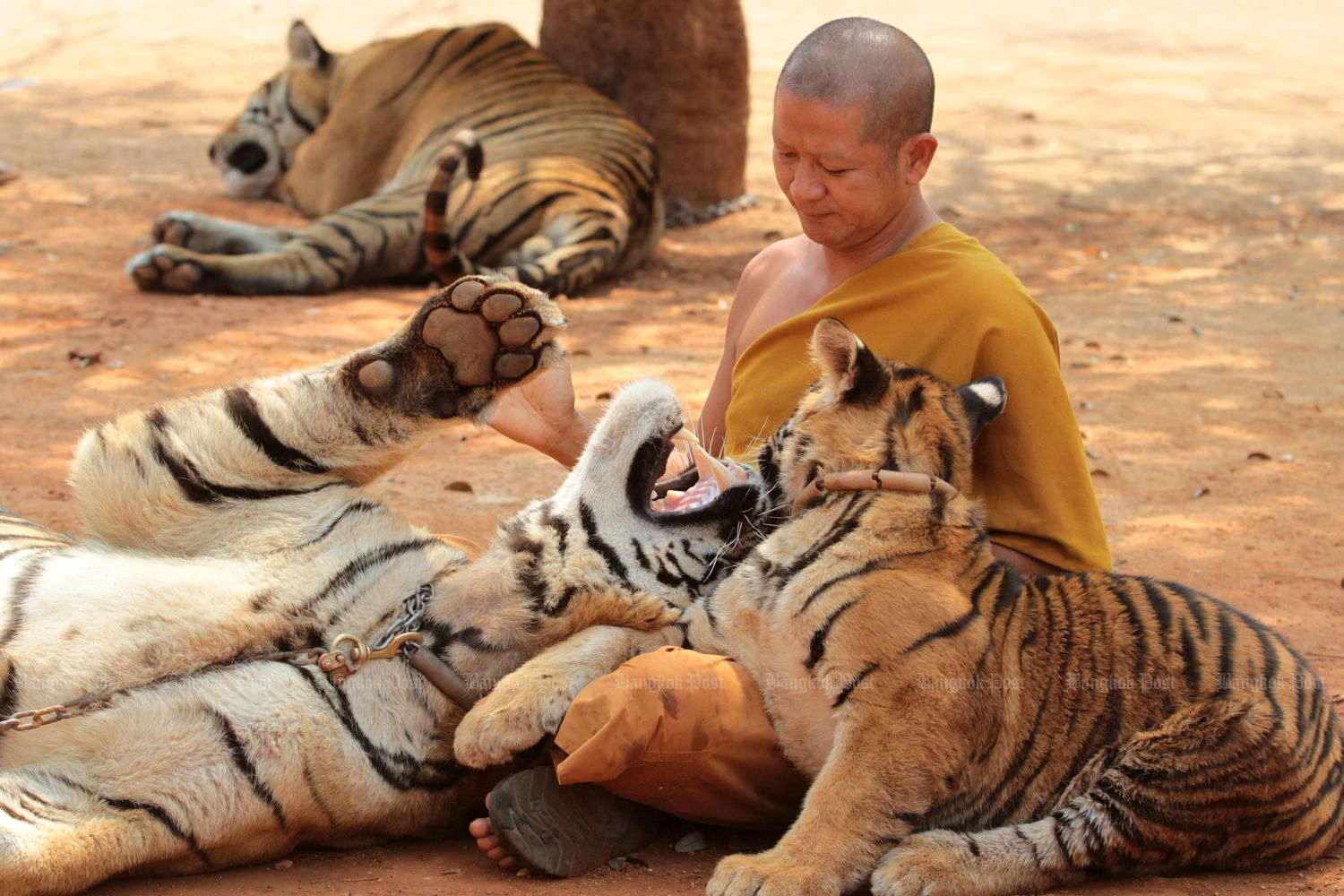
More than half of the 147 tigers seized from a Kanchanaburi temple three years ago have died of laryngeal paralysis, which causes upper airway obstruction in the animals.
The large cats in the care of two wildlife sanctuaries in Ratchaburi province had shown symptoms since they were brought there in June 2016, according to officials at the Department of National Parks, Wildlife and Plant Conservation (DNP).
Officials detected the signs back then and despite constant care, 86 of them died, most of which were of the Siberian breed, they said.
The disease, commonly found in tigers and cats, is caused by immune deficiencies from inbreeding, they said. But last year, an official said in an interview the disease could have been caused by stress.
The tigers, evidence in a wildlife trafficking case, have been dropping dead one by one since May 2016 and director-general Thanya Netithammakul has been kept informed about developments.
After the animals died, some organs were preserved in formalin and the carcasses were properly buried according to protocols.
Mr Thanya said experts from Mahidol University had conducted autopsies on them and the results should be known next week. “We have taken good care of them but an infection can’t be ruled out,” he said.
The history of the notorious Kanchanaburi tiger temple dates back to 2001, when forestry officials seized seven tigers and asked Somchai Visetmongkolchai, a veterinarian, to be their custodian. He then asked monks at Wat Pa Luangta Maha Bua in Kanchanaburi to help keep them.
The seven animals subsequently bred and their numbers rose to 148 in the following 15 years.
The temple, lacking resources to feed and care for the animals as they grew up, started accepting donations and tourists, who petted and posed with the chained cats, raising criticism about animal mistreatment. Concerns were also raised about their proper care and safety.
Suspicions that something was amiss were confirmed when parts and carcasses of the animals were found with their organs removed or preserved. Since some parts of the animals are used in Chinese traditional medicines and of much market value, they were believed to be part of a wildlife trafficking ring. The activities were exposed in an investigative report in National Geographic.
The office of the Convention on International Trade in Endangered Species of Wild Fauna and Flora (Cites) pressured the Thai government to take action.
In 2016, the DNP took legal action against the temple and seized 147 large cats from it. Most of them are non-native Siberian tigers, which are not suitable for breeding here.
Of the total, 85 were kept at the Khao Prathap Chang Wildlife Sanctuary and 54 of them had since died. The other 62 tigers were sent to the Khao Son Wildlife Sanctuary, also in Ratchaburi, and 32 of them had since died.
Tigers are a protected species under the 1992 wildlife conservation and protection law.